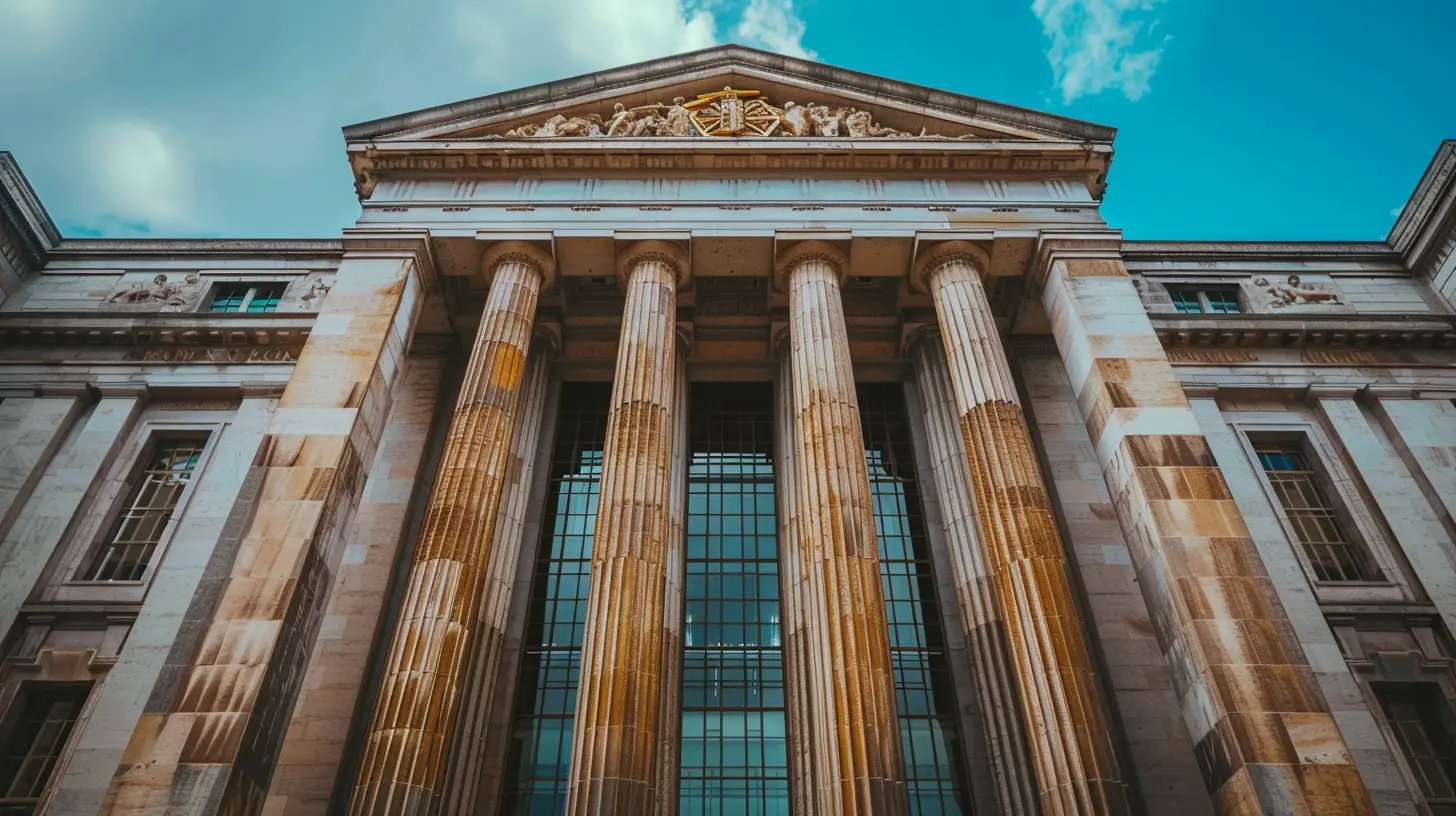What Central Banks Do to Control Interest Rate Movements
6 May 2025
Ever wondered why interest rates seem to go up and down like a rollercoaster? Well, it's not just random market forces at play—central banks have a hand in it. These institutions are like the puppeteers pulling the strings behind the scenes to keep the economy running smoothly.
But how exactly do they control interest rate movements? And why does it even matter? Let's break it down in a simple and engaging way.

Why Interest Rate Movements Matter
Interest rates are like the price tag on money. When rates are low, borrowing becomes cheaper, encouraging people and businesses to spend more. On the flip side, when rates rise, borrowing becomes expensive, which slows down spending and keeps inflation in check.Central banks, such as the Federal Reserve (in the U.S.), the European Central Bank, and the Bank of England, use interest rates as a powerful tool to balance economic growth and inflation. Their ultimate goal? To ensure financial stability while fostering sustainable economic progress.

How Central Banks Control Interest Rate Movements
So, how do central banks actually influence interest rates? They have a few tricks up their sleeves, and each one plays a crucial role in shaping the financial landscape.1. Setting the Benchmark Interest Rate
The most direct way central banks control interest rates is by setting the benchmark rate. This is often referred to as the policy rate, such as:- The Federal Funds Rate (U.S.)
- The Bank Rate (U.K.)
- The Refinancing Rate (ECB, Europe)
By raising or lowering these rates, central banks send strong signals to commercial banks, which then adjust their own rates accordingly.
How it works:
- If a central bank raises the benchmark rate, borrowing money becomes more expensive. This discourages borrowing and spending, which helps cool down inflation.
- Conversely, if they lower the rate, borrowing becomes cheaper, encouraging spending and investment, which stimulates economic growth.
2. Open Market Operations (OMO)
This might sound technical, but think of it like a central bank playing the role of a big investor in the financial markets. Through Open Market Operations (OMO), central banks buy or sell government securities (like bonds) to regulate the money supply.How it works:
- Buying securities: Injects cash into the banking system, increasing liquidity. More money in circulation means lower interest rates, making borrowing easier.
- Selling securities: Pulls money out of the system, reducing liquidity. This makes borrowing more expensive, pushing interest rates higher.
OMO is a subtle yet powerful way for central banks to nudge interest rates without directly adjusting the policy rate.
3. Adjusting Reserve Requirements
Every commercial bank is required to keep a certain percentage of its deposits as a reserve. This is known as the reserve requirement. By tweaking this percentage, central banks influence how much money banks can lend out.How it works:
- Lowering reserve requirements: Banks can lend more money, increasing liquidity and pushing interest rates down.
- Raising reserve requirements: Banks must hold more cash in reserves, limiting lending, reducing liquidity, and increasing interest rates.
While this tool isn't used as frequently as others, it remains an important part of a central bank's arsenal.
4. Forward Guidance (Influencing Market Expectations)
Sometimes, it's not just about taking action—it’s about what’s said. Central banks communicate their future policy intentions through forward guidance to influence market behavior.For example, if the Federal Reserve announces that interest rates will remain low for the foreseeable future, businesses and investors adjust their strategies accordingly. This guidance helps stabilize financial markets and reduce uncertainty.
Conversely, if a central bank hints at upcoming hikes, markets react quickly, leading to changes in bond yields, stock prices, and borrowing costs.
5. Currency Management and Foreign Exchange Interventions
Interest rates are closely tied to currency values. Central banks sometimes intervene in foreign exchange markets to stabilize their currency, which indirectly affects interest rates.For example, if a central bank wants to weaken its currency to boost exports, it may lower interest rates to make its currency less attractive to foreign investors. On the other hand, raising rates strengthens the currency, as international investors seek higher returns.
This interconnection between monetary policy and exchange rates shows just how influential central banks are in global finance.

Why Central Banks Adjust Interest Rates
Now that we know how central banks control interest rates, you might be wondering—why do they keep tweaking them? Well, they do it to address specific economic challenges.1. Controlling Inflation
Inflation is like a sneaky thief that erodes the value of money. When prices rise too fast, it becomes harder for people to afford essentials. Central banks step in by increasing interest rates, which slows down spending and tames inflation.2. Encouraging Economic Growth
During slow economic periods (like recessions), central banks cut interest rates to encourage borrowing, spending, and investment. This stimulates growth, helping businesses expand and creating more jobs.3. Managing Employment Levels
A balanced labor market is crucial for a healthy economy. When unemployment is high, central banks lower rates to make loans cheaper, encouraging businesses to hire more workers. Conversely, if the job market overheats, they may raise rates to prevent excessive wage-driven inflation.4. Stabilizing Financial Markets
Sudden market swings can create panic among investors. Central banks intervene with interest rate adjustments to calm the markets. For example, during a financial crisis, they may lower rates to inject liquidity and prevent widespread defaults.
The Domino Effect of Interest Rate Changes
Interest rate movements don’t just impact banks—they ripple through the entire economy. Here’s how:- Mortgage rates: Higher interest rates mean higher monthly loan payments, affecting home affordability.
- Credit card debt: Borrowing costs rise, making credit card debt more expensive.
- Stock market: When interest rates go up, investors move money out of stocks and into interest-bearing assets like bonds.
- Savings accounts: Higher interest rates lead to better returns on savings deposits.
Whether you're a borrower or a saver, central bank decisions impact your financial life in more ways than you might think.
Conclusion
Central banks aren't just faceless institutions—they're the economy's guardians, steering interest rates to maintain economic balance. Through policy rate adjustments, open market operations, reserve requirements, forward guidance, and currency interventions, they fine-tune economic conditions to prevent crises and fuel stability.So, the next time the Fed or the ECB makes a big announcement, pay attention! Their decisions shape everything from housing costs to job markets and even the value of your savings. Interest rates may seem like just another financial term, but they're the beating heart of our economy.
all images in this post were generated using AI tools
Category:
Interest Rates ImpactAuthor:

Yasmin McGee
Discussion
rate this article
5 comments
Kairoth Fields
Central banks wield significant influence over interest rates, utilizing tools like open market operations and reserve requirements. Understanding these mechanisms is crucial for investors, as they shape economic conditions and impact financial markets' dynamics.
May 18, 2025 at 3:28 AM

Yasmin McGee
Thank you for highlighting the importance of central banks' tools! Understanding their impact on interest rates is indeed vital for navigating financial markets effectively.
Fiona Weber
Central banks utilize tools like open market operations and interest rate adjustments to influence economic activity and stabilize inflation effectively.
May 9, 2025 at 7:49 PM

Yasmin McGee
Thank you for your insight! Indeed, central banks use these tools strategically to manage economic stability and inflation.
Inez Matthews
Crucial for economic stability.
May 7, 2025 at 7:26 PM

Yasmin McGee
Absolutely, central banks play a vital role in maintaining economic stability through interest rate management.
Audra Lamb
This article sparks my curiosity! I’m eager to learn more about how central banks use tools like open market operations and reserve requirements to influence interest rates. How do these strategies interplay with inflation and economic growth? Can anyone share real-world examples?
May 7, 2025 at 3:05 AM

Yasmin McGee
Thank you for your interest! Central banks use open market operations to buy or sell government securities, affecting liquidity and interest rates. Reserve requirements determine the amount banks must hold in reserves, influencing their lending capacity. These tools help manage inflation and support economic growth. A real-world example is the Federal Reserve's response during the 2008 financial crisis, where they lowered interest rates and used quantitative easing to stimulate the economy.
Uma Lewis
This article provides valuable insights into central banks' strategies for managing interest rates. Understanding these mechanisms is essential for grasping the broader economic landscape and investment implications.
May 6, 2025 at 4:02 AM

Yasmin McGee
Thank you for your feedback! I'm glad you found the insights valuable for understanding the complexities of central banks and their impact on the economy.
MORE POSTS

Venture Debt vs. Equity: What’s Best for Your Startup?

How to Build Generational Wealth for Your Family's Future

Hidden Fees You Need to Know About Before Signing a Mortgage

What the LIBOR Transition Teaches Us About Financial Regulation

The Basics of Compound Interest: How Interest Works in Your Favor